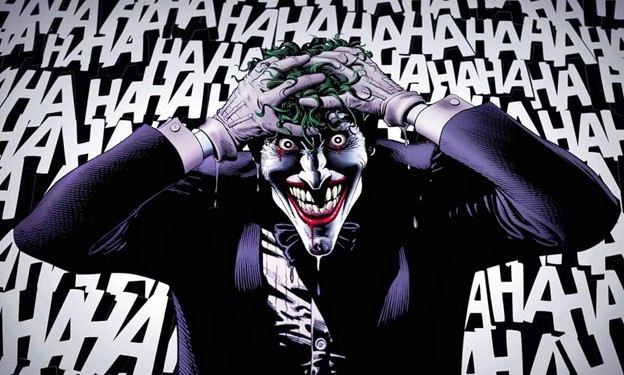Batman: Killing Joke review
Batman: Killing Joke is written by Alan Moore (V for Vendetta, Watchmen) and art done by Brian Bolland (Camelot: 3000, Judge Dredd).
Released in 1988, Killing Joke is a two-issue one-shot story that follows Batman as he tracks down the Joker after he shoots and paralyzes Barbara Gordan, Batgirl and daughter of Commissioner James Gorden.
Killing Joke also acts as the Joker’s official origin within DC Comics. Batman was created by Bob Kane and Bill Finger and first appeared in Detective Comics issue #1 published by DC Comics in 1937.
Batman: Killing Joke is a dark and brutal Batman story. Moore writes a complex and riveting masterpiece that explores Batman and Joker’s relationship from a new perspective and gives meaning to Batman’s ”no-kill” ideology.
Moore captures the essence of Batman, pushing him to his limits and the lengths he’s willing to take, even if it means killing. Bolland’s art perfectly encapsulates this twisted and brooding tale with dark, smooth outlining and coloring. Batman: Killing Joke is a classic Batman story that’s willing to take bold risks to tell a dark story.
What I love about Killing Joke is how simple, yet rich and complex the story is. On the outside, Killing Joke is another Batman story where we find the caped-crusader being pushed to his limits by the Joker, eventually overcoming him and saving the day. But, on the inside is a rich and complex story that shows the trials and tribulations of Batman and Joker’s relationship and the severity of the situation at hand: the shooting of Barbara Gordan and capturing of Commissioner Gordan who’s brutally beaten and forced down an amusement park ride naked while looking at pictures of his daughter being victimized.
Joker’s origin weighs heavy on the overall story and theme which explores Joker’s “one bad day.” That’s all it took for the Joker to become the Joker: getting involved in criminal work at Ace Chemicals and accidentally falling in a pool of chemicals which motivate Joker’s crimes in the story. Moore brilliantly writes Joker from a new perspective, giving him a purpose for his crimes on Gotham City.
Throughout Batman’s publication history, Batman and Joker’s relationship has simply been laid out as “you’re the bad guy and I must stop you.” Moore gives Batman the realization that even he hasn’t fully connected with Joker and maybe he can help him with whatever trauma he has.
What also I love about Killing Joke is how it explores dense ideologies that make readers question the decisions these characters make. Commissioner Gordan’s ideology of killing and taking people in “by the books,” believing that Joker has to be put to trial and jailed in Arkham although shooting and paralyzing his daughter; captures the nature of Batman’s flaws and approach to apprehending the Joker.
The icing on the cake comes towards the end of the story, Joker starts laughing uncontrollably with Batman following suit as he plunges his hand through Joker’s chest. Moore plays with the idea and interpretation of Batman killing Joker, ending the book on a haunting and chilling note; however, many fans interpret that Batman apprehended the Joker and sent him with Gotham City police. So, did Batman kill the Joker? You decide.

Senior Savion Simmavong is a staff writer for the A-Blast. He's entering his first year with the staff. In his free time, he enjoys reading, playing video...








